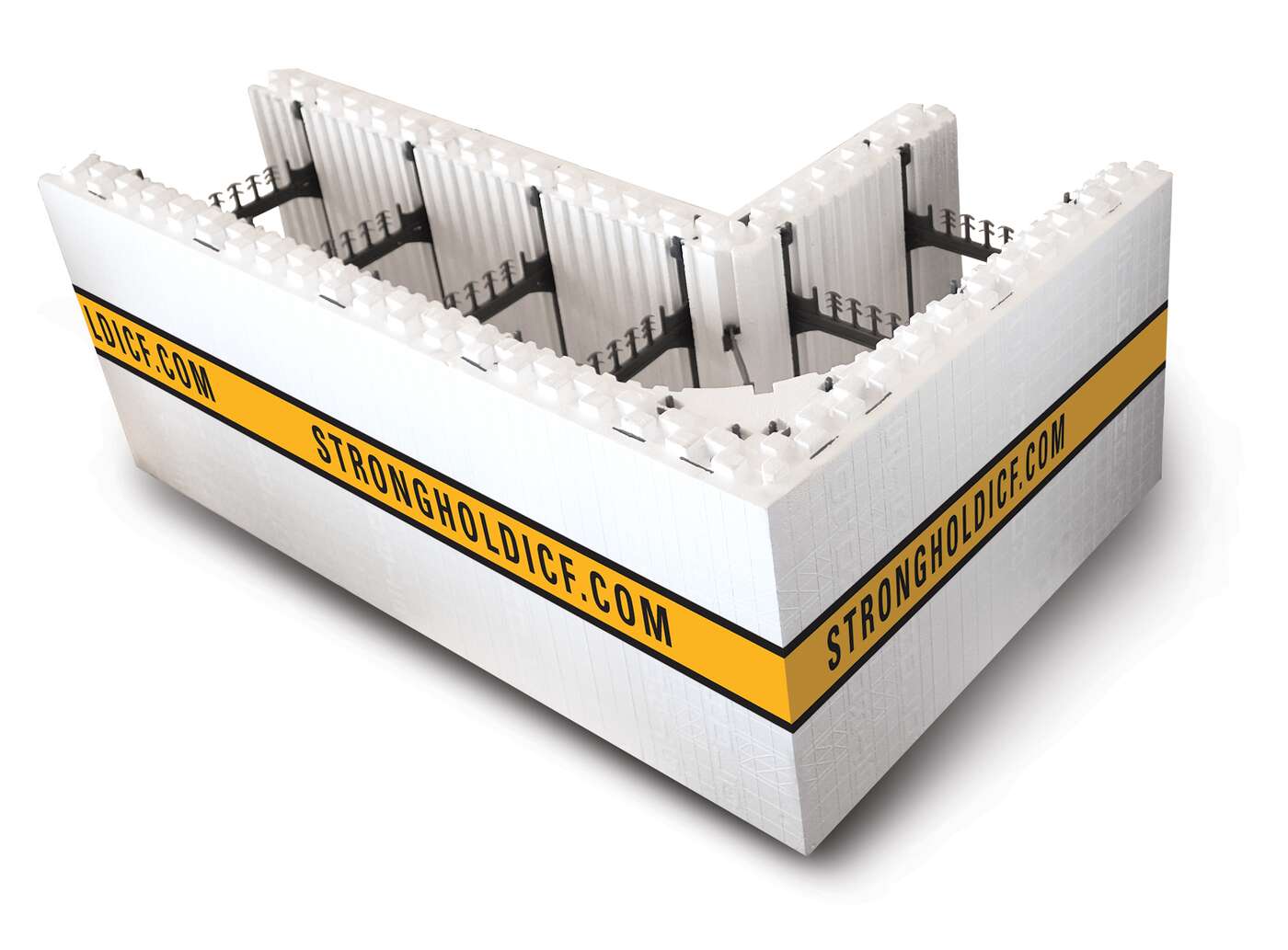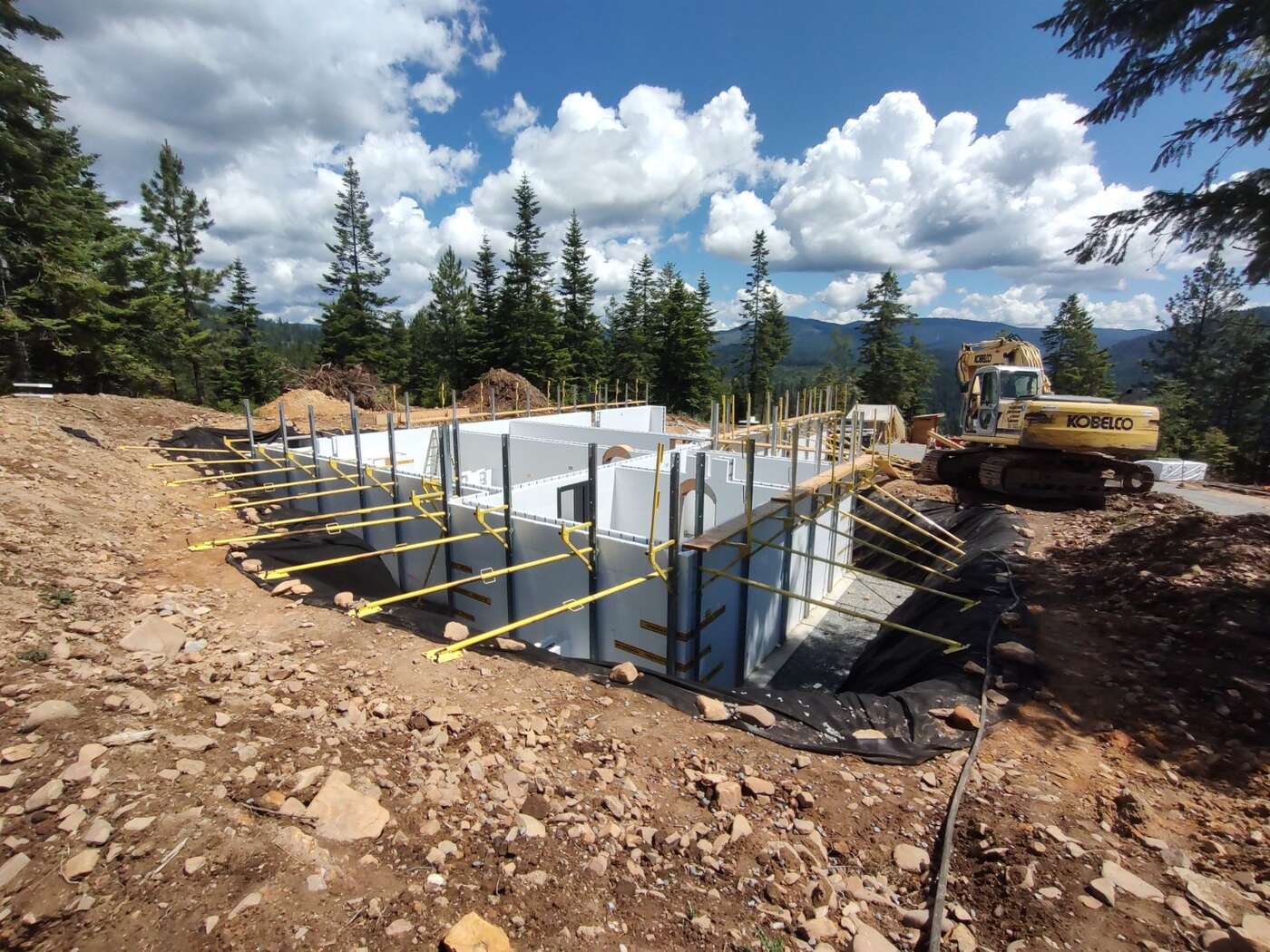When it comes to building strong, energy-efficient structures, the materials and methods you choose make all the difference. For decades, traditional poured concrete has been the go-to for foundations and walls. But now, builders are turning to Stronghold ICF. It’s a smarter, more efficient way to construct durable, well-insulated buildings.
So, what sets Stronghold ICF apart from traditional concrete forms? Let’s break it down.
The Basics: Stronghold ICF vs. Traditional Concrete
Traditional Concrete Construction
Poured concrete has been a staple in construction since the 1980s. The process involves setting up temporary wood or steel forms, reinforcing them with rebar and then pouring concrete into the forms. Once the concrete cures, the forms are removed, leaving a solid wall.
While this method provides strength, it has some drawbacks:
- Poor insulation: Concrete alone has a low R-value (less than 3), meaning it doesn’t retain heat well. Builders must add insulation later, increasing labor and material costs.
- Prone to cracking: If not properly cured or reinforced, poured concrete can develop cracks, leading to moisture leaks and structural issues.
- Weather-dependent: Cold temperatures can disrupt curing, delaying projects and risking weak spots in the concrete.
Stronghold ICF Construction
Stronghold ICF (Insulated Concrete Forms) takes a different approach. Instead of temporary forms, it uses interlocking expanded polystyrene (EPS) foam blocks that stay in place after the concrete is poured. The result is a solid concrete core sandwiched between two layers of insulation.
Here’s why builders prefer Stronghold ICF:
- Superior insulation: With an R-value of 25 or higher, ICF walls keep buildings warmer in winter and cooler in summer, slashing energy bills.
- Faster construction: The foam blocks are lightweight and easy to stack, reducing labor time compared to setting up traditional forms.
- Built-in strength: The continuous webs and locking teeth in Stronghold ICF prevent shifting, creating straighter more stable walls.
Key Advantages of Stronghold ICF
1. Better Insulation, Lower Energy Costs
Traditional concrete walls are terrible insulators. Without added insulation, they let heat escape, forcing HVAC systems to work harder. Stronghold ICF solves this with EPS foam that traps heat inside. Homes built with ICF can see lower energy costs compared to traditional builds.
2. Reduced Labor & Faster Build Times
Setting up wood or steel forms is time-consuming. Workers must measure, brace, and reinforce them before pouring concrete. With Stronghold ICF, the forms are the structure. Just stack, brace, and pour. Builders report faster project completion, especially in cold weather, since the foam protects curing concrete.
3. Improved Structural Integrity
Poured concrete can crack if the ground shifts or water pressure builds up. Stronghold ICF walls are less prone to cracking because the foam absorbs stress and the locking teeth keep blocks aligned. The result? A stronger, more durable structure that stands up to extreme weather, including hurricane-force winds.
4. Quieter, More Comfortable Living Spaces
The combination of concrete and EPS foam insulation together are a powerful duo to block exterior noise. Homeowners enjoy quieter, more peaceful interiors.
5. Resistance to Mold, Fire & Pests
Wood-framed buildings attract termites and mold. Poured concrete resists pests but still allows moisture leaks. Stronghold ICF combines the best of both: concrete strength with foam insulation that repels moisture, mold, and even fire (ICF walls can withstand flames for up to 4 hours).

Why Builders Are Switching to Stronghold ICF
The construction industry is shifting toward methods that save time, cut costs, and improve performance.
Stronghold ICF checks all these boxes:
- Lower long-term costs: Reduced energy bills and fewer repairs mean savings for homeowners.
- Easier to work with: No need for specialized formwork or extra insulation steps.
- More stable in extreme conditions: Unlike traditional concrete, ICF performs well in both freezing and hot climates.
One builder who switched to Stronghold ICF for a residential addition noted that even 60 mph winds during construction didn’t damage the foam forms, proving their durability before the concrete was even poured.
The Bottom Line
While traditional concrete construction has its place, Stronghold ICF offers a better way to build. With stronger walls, better insulation, and faster installation, it’s no wonder contractors and homeowners are making the switch.
If you’re tired of dealing with cracked foundations, high energy bills and slow construction timelines, it’s time to consider Stronghold ICF. The future of building is here.

